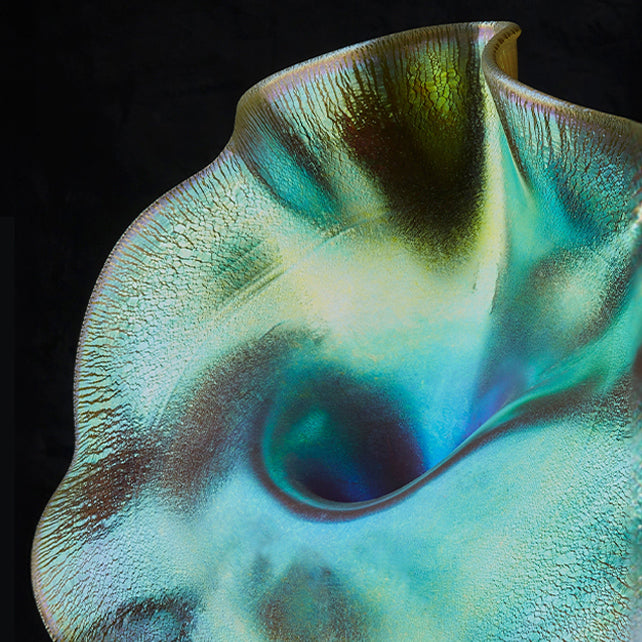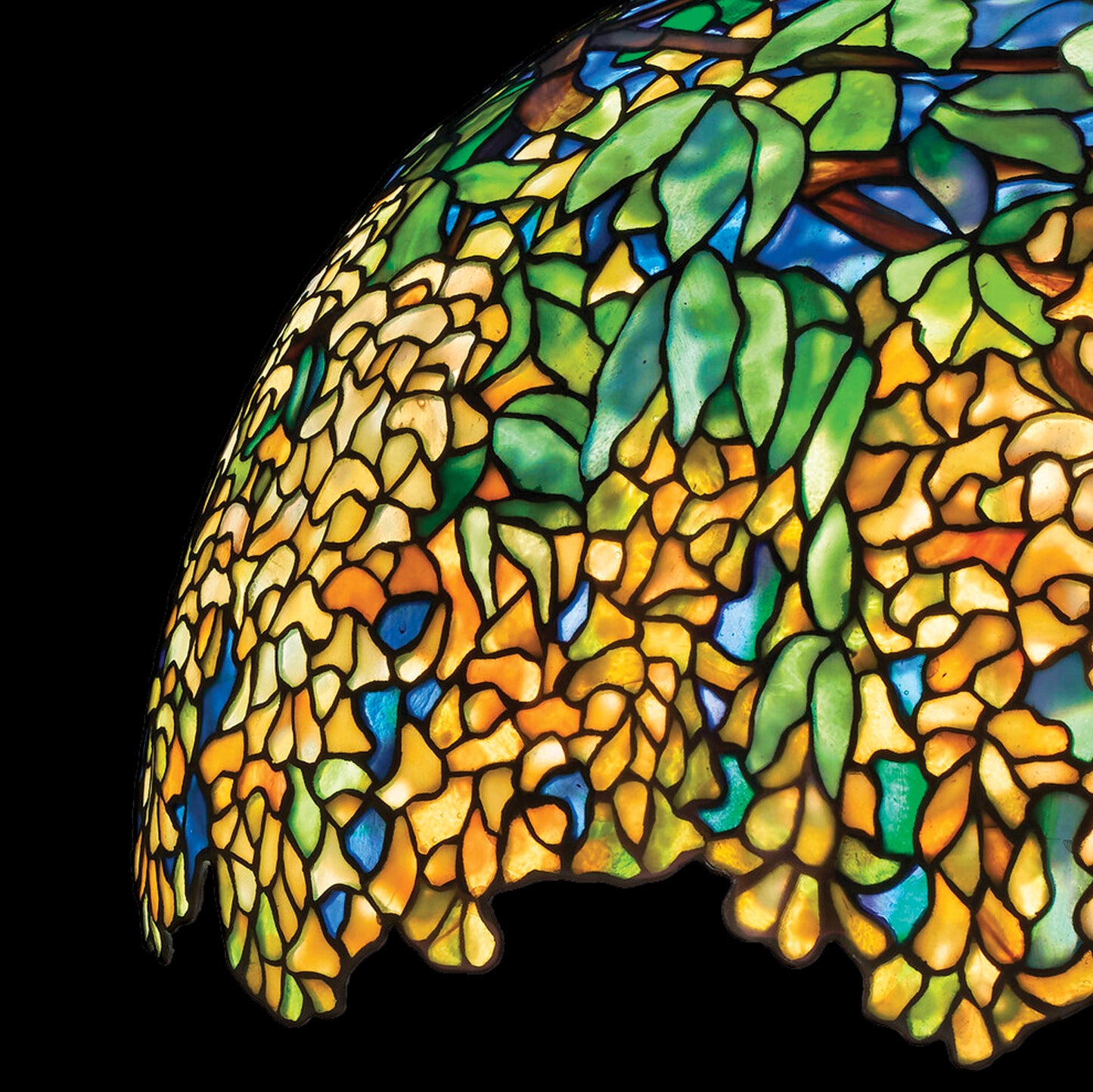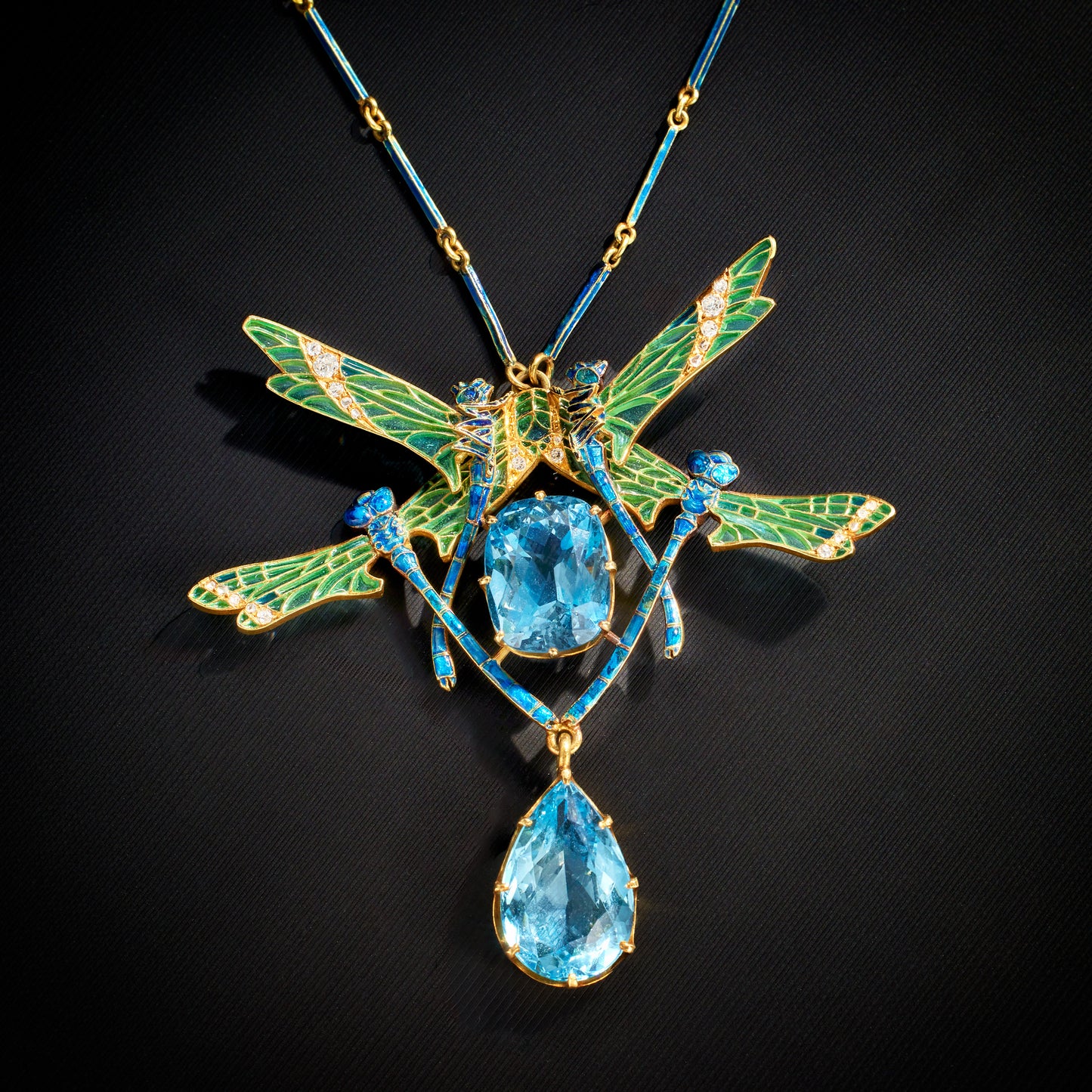Loetz’s roots reach back to 1836 when Johann Eisner founded a glassworks in Klostermühle, now part of the Czech Republic. After his death, the company was eventually acquired in 1851 by Frank Gerstner and his wife, Susanne. Susanne was the widow (“Witwe” in German) of Johann Loetz, a glassmaker about whom precious little is known. Gerstner transferred ownership of the company to Susanne in 1855 prior to his death, and she spent the next 20 years expanding the company, which she renamed Johann Loetz Witwe (Johann Loetz’s Widow).
In 1879, Susanne turned the company over to her grandson, Maximilian von Spaun. He soon hired Eduard Prochaska as director and they embarked on modernizing the factory and introducing new techniques and processes. Their collaboration began with innovations in Historicism glass (such as marmorisierte, which imitated semi-precious stones) and were met with success at exhibitions in Brussels, Munich and Vienna and awards at the Paris Exposition Universelle in 1889. In 1897, however, von Spaun saw Tiffany glass in Bohemia and Vienna, setting the company on a new path toward the prevailing Art Nouveau style. Between 1898 and 1905, Prochaska’s technical expertise and von Spaun’s business acumen led them to enormous success, crowned by the Phänomen series of designs.
Loetz went on to operate for several more decades, consistently producing high-quality glass but never at the level of success seen around the turn of the 19th century. The remaining decades were punctuated by a series of financial issues, ownership changes, production setbacks, the Great Depression, and WWII, before they ultimately closed their doors in 1947. Their impressive legacy lives on in many private and public collections, including the PASK Museum, Klatovy which is entirely dedicated to Loetz.























